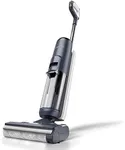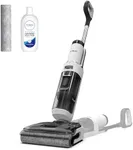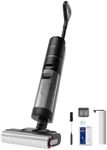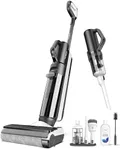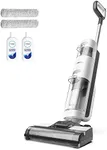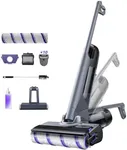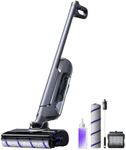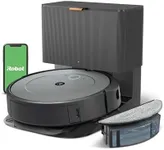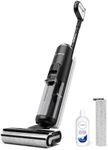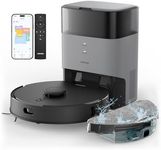Buying Guide for the Best Wet Vacuum For Hard Floors
Choosing a wet vacuum for hard floors can make cleaning much easier and more effective, especially if you deal with spills, pet messes, or regular dirt. The right wet vacuum will help you keep your floors spotless without damaging them. When shopping, it's important to understand the main features and specifications so you can match the vacuum to your cleaning needs and the type of hard floors you have.Suction PowerSuction power refers to how strongly the vacuum can pull in dirt, debris, and liquids from your floors. This is important because stronger suction means better cleaning, especially for sticky spills or fine dust. Suction power is often measured in air watts or kilopascals, but sometimes just described as 'high' or 'low.' Lower suction is fine for light cleaning and delicate floors, while higher suction is better for tough messes or larger areas. If you have frequent heavy spills or pets, look for a model with higher suction. For occasional or light cleaning, a moderate suction level will be sufficient.
Water Tank CapacityWater tank capacity tells you how much liquid the vacuum can hold before you need to empty it. This is important because a larger tank means you can clean for longer without stopping, which is helpful for bigger rooms or frequent messes. Small tanks (under 0.5 liters) are best for quick cleanups or small spaces, medium tanks (0.5 to 1.5 liters) suit average homes, and large tanks (over 1.5 liters) are ideal for big areas or heavy-duty use. Choose a tank size based on how much floor space you need to clean at once and how often you want to empty the tank.
Brush Type and Floor CompatibilityThe type of brush and its compatibility with your floor is crucial because the wrong brush can scratch or damage hard floors. Some wet vacuums have soft roller brushes for delicate surfaces like hardwood, while others have stiffer brushes for tile or stone. If you have sensitive floors, look for soft or microfiber brushes. For tougher surfaces, a firmer brush is fine. Always check if the vacuum is recommended for your specific floor type to avoid damage and get the best cleaning results.
Filtration SystemThe filtration system captures dust, allergens, and fine particles, preventing them from being released back into the air. This is especially important if you have allergies or pets. Basic filters are fine for general cleaning, but HEPA filters are better for trapping tiny particles and improving air quality. If you or your family have allergies or respiratory issues, prioritize a vacuum with a high-quality filtration system.
Corded vs. CordlessWet vacuums come in both corded and cordless versions. Corded models offer unlimited run time but require access to a power outlet, which can limit mobility. Cordless models are more convenient and portable, but their battery life limits how long you can clean in one go. If you need to clean large areas or want to avoid recharging, a corded model is best. For quick cleanups or if you value flexibility, a cordless vacuum is a good choice.
Weight and ManeuverabilityThe weight and maneuverability of a wet vacuum affect how easy it is to use, especially if you need to carry it up stairs or move it around furniture. Lighter models are easier to handle and better for frequent use or multi-level homes. Heavier models may offer more power or capacity but can be tiring to use. Consider your physical comfort and the layout of your home when choosing the right balance between weight and performance.
Noise LevelNoise level is how loud the vacuum is when running. This matters if you have young children, pets, or want to clean without disturbing others. Quieter models are more comfortable to use for longer periods. Noise is usually measured in decibels (dB); lower numbers mean quieter operation. If noise is a concern, look for models specifically designed to operate quietly.

